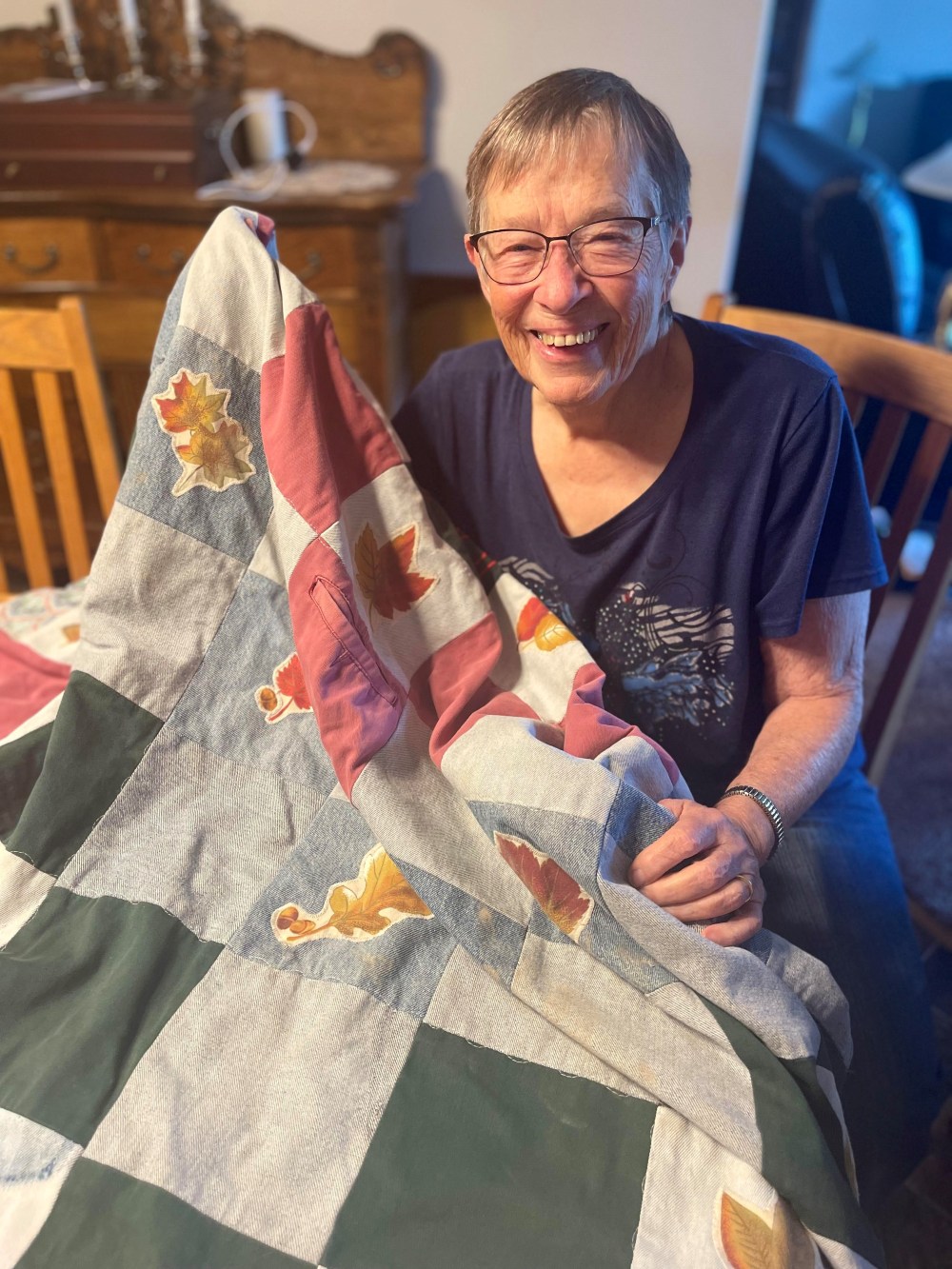Altona resident’s denim blankets inspire global giving
Advertisement
When Ruth Stoesz began crafting denim blankets, she had no idea how beloved they would become.
“The first blanket I made was for my son in university in the early 1990s. Someone saw it and wanted one too. That was the first one I sold,” the Altona resident recalls with a smile.
The fabric came from old, donated jeans at the local MCC store. “For a period of time, they would keep a box of non-usable jeans, so I picked out what I wanted. I paid a few dollars for the full box.”

That was the start of a lifelong passion. “I started with one, and now I’ve become known for them,” she chuckles. “I’ve made over 100.”
Her blankets have gained international popularity. Melanie Giesbrecht, a former neighbour in the Altona Village, shares how she acquired one. “Our families were village friends. After my mom passed away in 1999, our family asked Ruth if she would make each of my three sisters and I a jean blanket, backed by fabric my mom had intended to use for blankets for us. We each got a personalized appliquéd blanket.”
Giesbrecht traveled to the Netherlands in 2001 on the Inter-Menno exchange program. “When my dad came to visit me, he brought along a jean blanket made by Ruth. We had requested that it be made with appliqués of sunflowers to represent Altona’s connection to Van Gogh’s sunflower painting, thus the Netherlands,” she recalls. “My host mom, Marijke Laane, shared with me in 2023, when I revisited them, that the blanket had inspired her to learn to sew and to organize people in her church to make and donate blankets to charity.”
When Stoesz’s second son Kevin also traveled overseas with the Inter-Menno program in 2001, she sent some of her blankets along with him. “He was in Germany for half the year, and in Switzerland for the other half. He gave them as gifts to his host families. When we went to visit him, he asked if we could bring along another one. Those blankets have inspired many more blankets. They make them for missions. It’s a small world. Now, through all those different connections over the years, I know there are jean blankets from B.C. to Ontario.”
Stoesz adds, “It shows what you can create with repurposing stuff. Recycling was second nature to our grandmothers with large families.”
Stoesz’s method has been refined over the years. She cuts the squares herself, using a plastic template designed by her husband Bill. The blankets are machine-sewn and always a consistent size of 54 x 72 inches.
Stoesz incorporates all kinds of denim based on trends and uses repurposed sheets from MCC for backing. “Not much goes to waste. I do avoid stretch denim since it puckers, and acid-washed jeans because they aren’t strong. Sometimes, I’ll leave the little imperfections.”
Each blanket is signed and dated. Many include appliqués, pockets, and zippers. “The secret pocket makes it a great beach blanket. You have a place for your car keys, phone, and a bit of money, and it doesn’t show.”

Sometimes she’ll even tuck a few candies and a little handwritten poem in the pocket for a sweet surprise.
“I have sold many, and given away many to my family. I also take orders. They make great gifts. They are pretty enough for the living room but strong enough to take to the beach. I meet many people who tell me they still have their blanket. They’re very durable.”
How many hours does each blanket take to make? “It’s hard to say. The blocks are cut ahead of time. You need a good sewing machine; I’ve gone through one already. I guess you could say about 10 hours depending on appliqués or any fancy details.”
Stoesz keeps some of her blankets for her own home. “My grandchildren just love them.”
Her sewing machine isn’t getting a break any time soon. She’s already planning a few more blanket projects for the winter.
